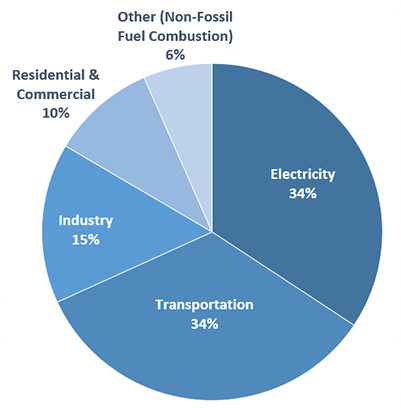What is CO2?
Carbon dioxide (CO2) is the primary gas emitted through human activities, accounting for about 82% of all human-related U.S. gas emissions in 2016. Human activities, including driving gas and diesel-powered vehicles, are adding more CO2 to the atmosphere than our planet normally processes through its natural cycles.1Why do CO2 levels matter?
When energy from the sun reaches the Earth, the planet absorbs some of this energy and radiates the rest back to space as heat. The Earth’s surface temperature depends on this balance between incoming and outgoing energy. Increases in greenhouse gas concentrations in the atmosphere cause a portion of the heat that normally would radiate away for the planet to be absorbed, re-emitting heat to the lower atmosphere and warming the Earth’s surface.2What does all this CO2 mean to you?
There is a lot science required to quantify the impact of the tons of CO2 that come out of your tailpipe and the rest of the tailpipes on our planet. The important thing to note is that transportation generates approximately 34% of the CO2 emissions in the United States.3 We have the opportunity to dramatically reduce this number by switching from fossil fuel powered vehicles to vehicles that are powered by electricity generated through methods that produce less emissions.
1National Research Council. The National Academies Press, Washington, DC, USA.
https://www.epa.gov/ghgemissions/overview-greenhouse-gases
2United States Environmental Protection Agency - Climate Change Indicators: Climate Forcing.
https://www.epa.gov/climate-indicators/climate-change-indicators-climate-forcing
3U.S. Environmental Protection Agency (2018). Inventory of U.S. Greenhouse Gas Emissions and Sinks: 1990-2016.
https://www.epa.gov/ghgemissions/overview-greenhouse-gases

